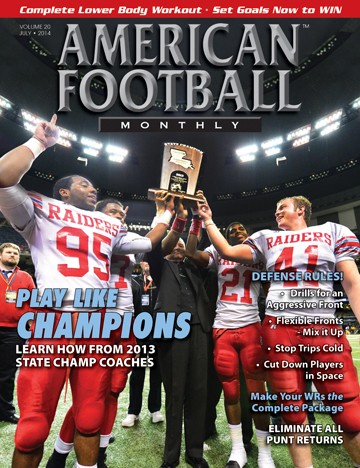Article CategoriesAFM Magazine
|
Flex Fronts: Stop offenses by using a different front on every play.by: Eugene WilsonDefensive Coordinator, Atlantic Coast High School (FL) © More from this issue As I watched Clemson and Auburn play in BCS games last January, I wondered how many high school coaches will be going to the spring coaching clinics put on by these schools. More importantly, what are defensive coaches going to do to stop these types of offense? Tight ends are becoming a huge part of offenses. While there are some teams that don’t ever use one, other teams use three on one play. We have to be able to line up against all of these formations. In Florida, we see a different type of offense every week. One week it could be the spread and then the next week the Wing-T. We play a team on our schedule that uses 20, 21, 22, 10, 11, and 32 personnel groups in one game. That is a lot to prepare for in four days of practice. In order to defend against each different formation, we try to move as few players on defense ....The full article can only be seen by subscribers.
|
|
|||||||
| HOME |
MAGAZINE |
SUBSCRIBE | ONLINE COLUMNISTS | COACHING VIDEOS |
Copyright 2025, AmericanFootballMonthly.com
All Rights Reserved





